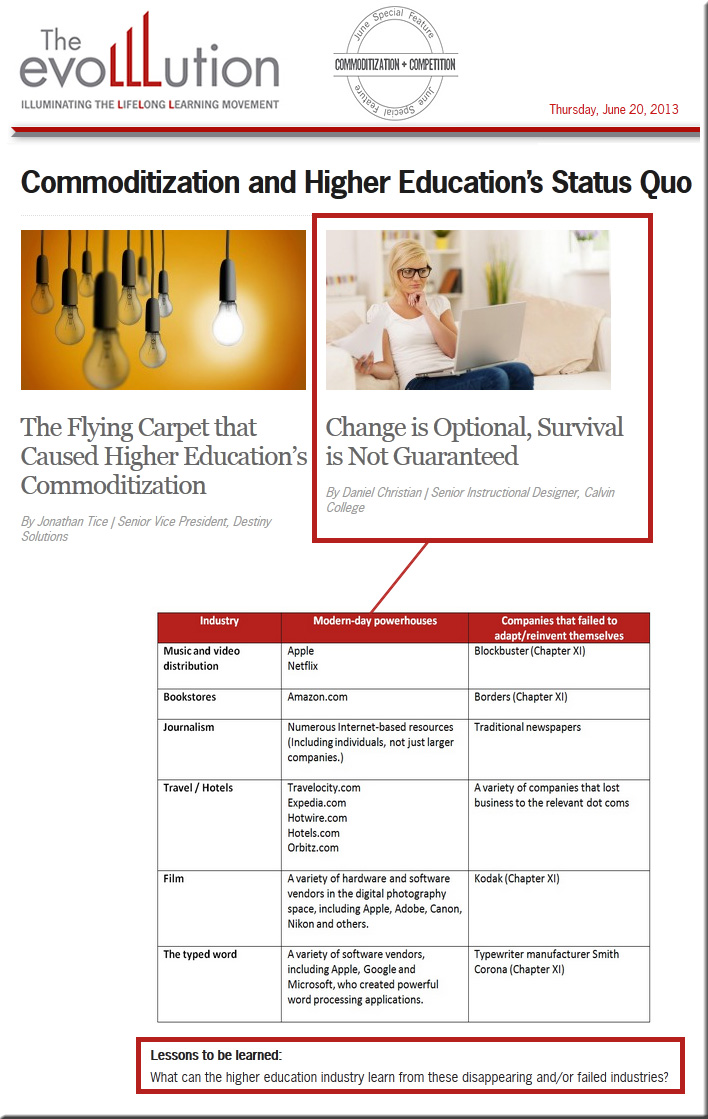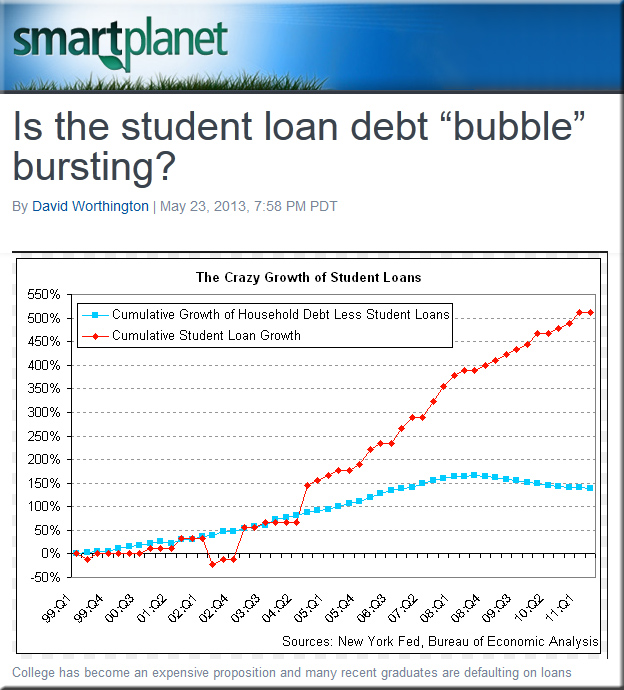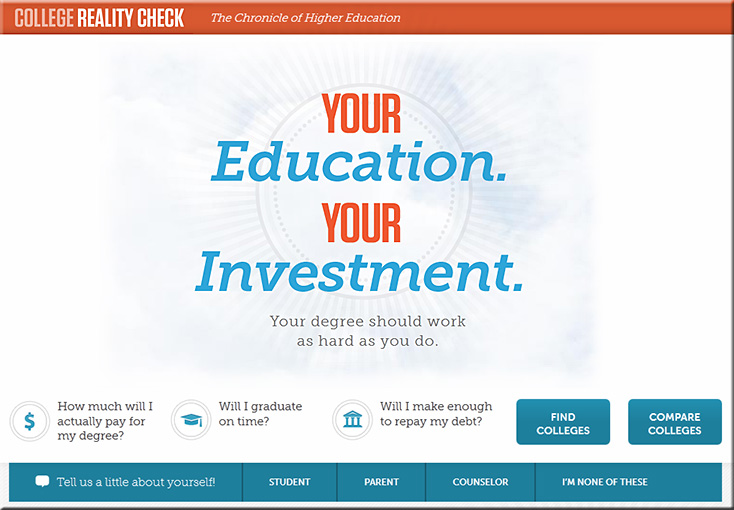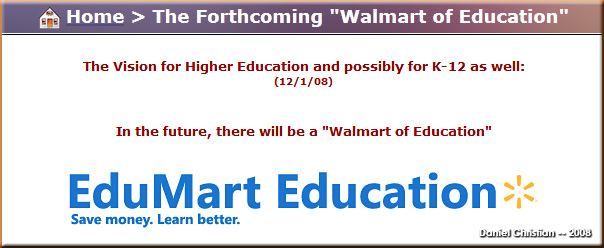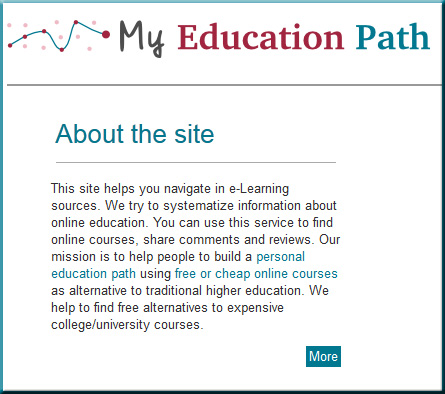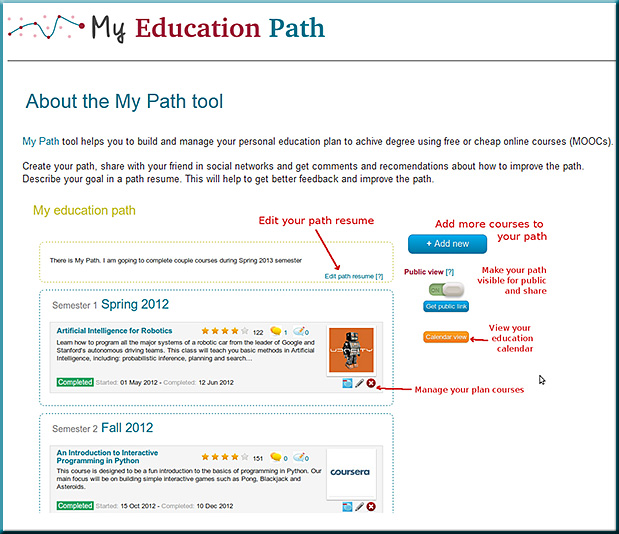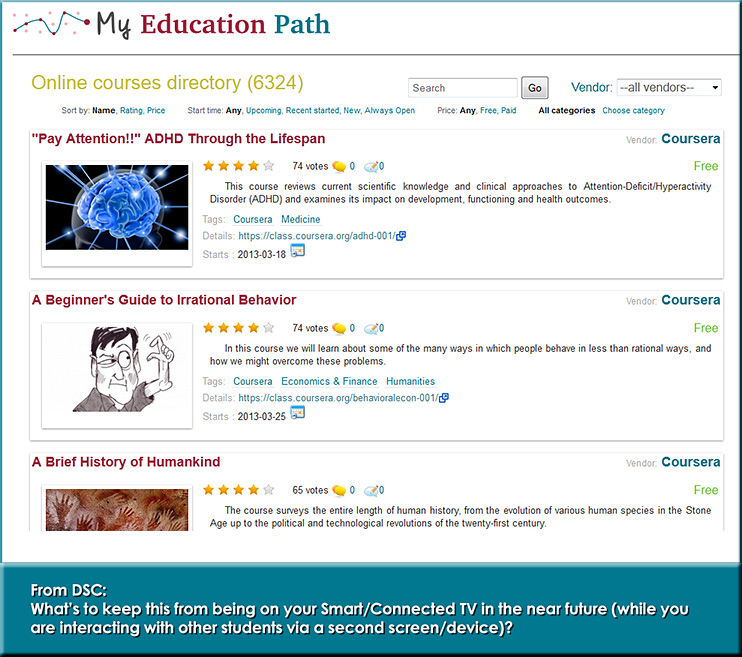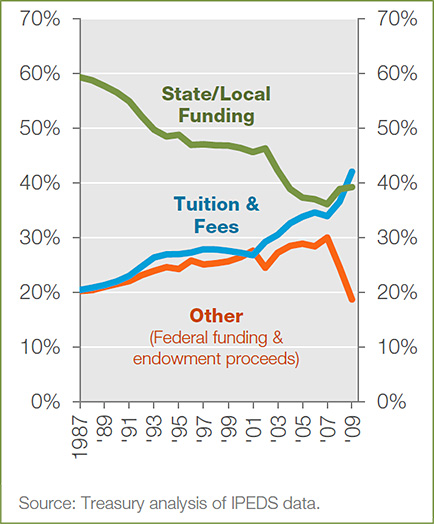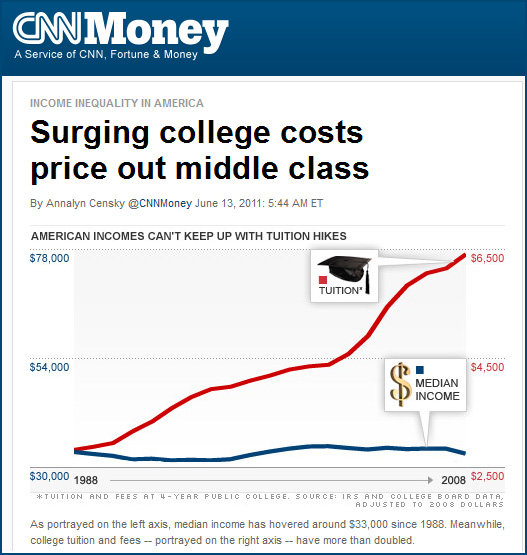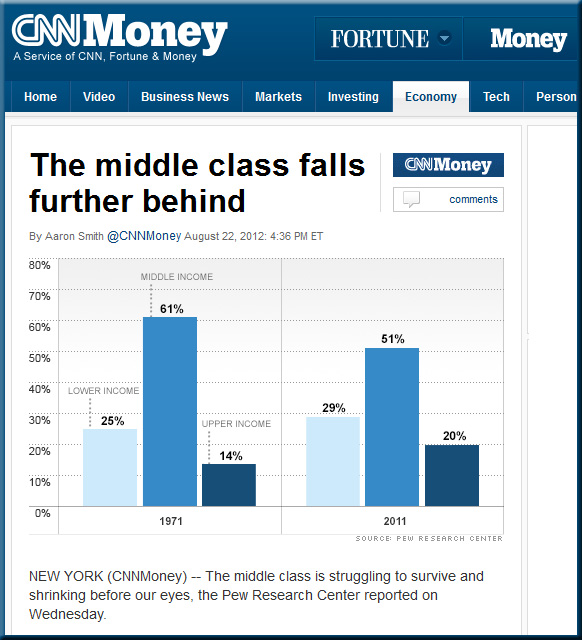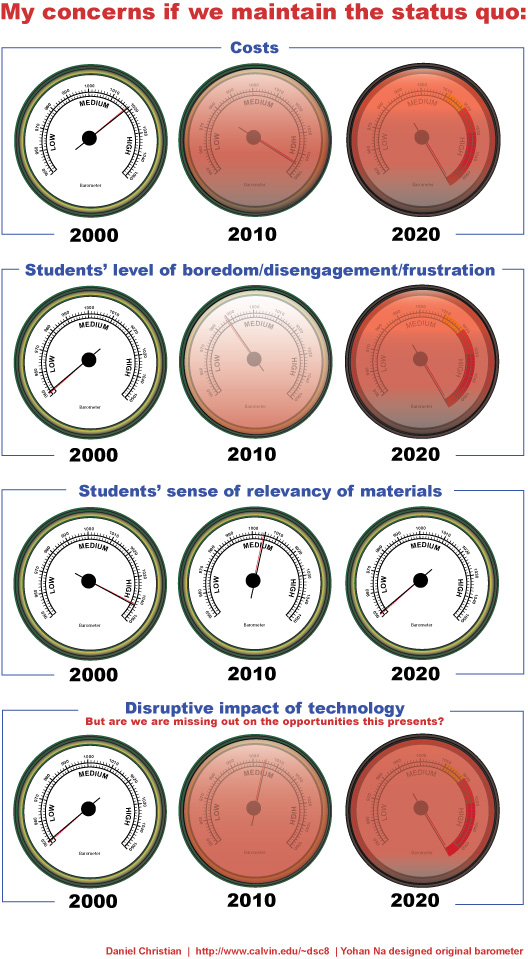My comments on “Online Education Will Be the Next ‘Bubble’ To Pop, Not Traditional University Learning“ — from Forbes.com by John Tamny
From a 50,000 foot level…
There is little question that higher education is a bubble. With the hollowing out of the middle class, and the vast majority of the nation’s wealth going to the top 1-5%, how does one think that the average person will be able to afford higher education in 5-10 years (given the current trajectories of decreasing incomes yet increasing costs of higher education)? Many can’t afford it *now*, even when they want to send their kids to college.
Given the status quo and the current trajectories, things don’t look good at all. I strongly disagree with that article/piece — and my guess would be that the author of the piece:
- Is pulling down a decent size salary and he doesn’t have to live from paycheck to paycheck — i.e. he doesn’t have to worry about where his next meal is coming from
- Is a proponent of the current status quo
- Has likely never taught online (or hasn’t for very long)
- Hasn’t caught the vision of what MOOCs could morph into if something like IBM’s Watson, Apple’s Siri, or Google Now gets baked into the recipe
- Doesn’t understand that those who thrive in the online learning world have to be highly-disciplined — i.e. they are the type of person who fits the often asked for “self starter” and the type of employee corporations love because they don’t have to supervise them much
But when parents spend a fortune on their children’s schooling they’re not buying education; rather they’re buying the ‘right’ friends for them, the right contacts for the future, access to the right husbands and wives, not to mention buying their own (‘Our son goes to Williams College’) status.
This may be true. But even the 1% will change their perspectives if employers start picking their talent primarily from predominantly online-based programs. If Christensen and Horn are correct (which I believe they are), the innovations in the online world will continue to outpace innovations in the face-to-face world. Given time, the online-based programs could be mind-blowing. (That said, I still think blended learning is the most effective choice, as it combines the best of both worlds).
But the bottom line here is that for most Americans, there had ***better be*** a higher education bubble!!!









